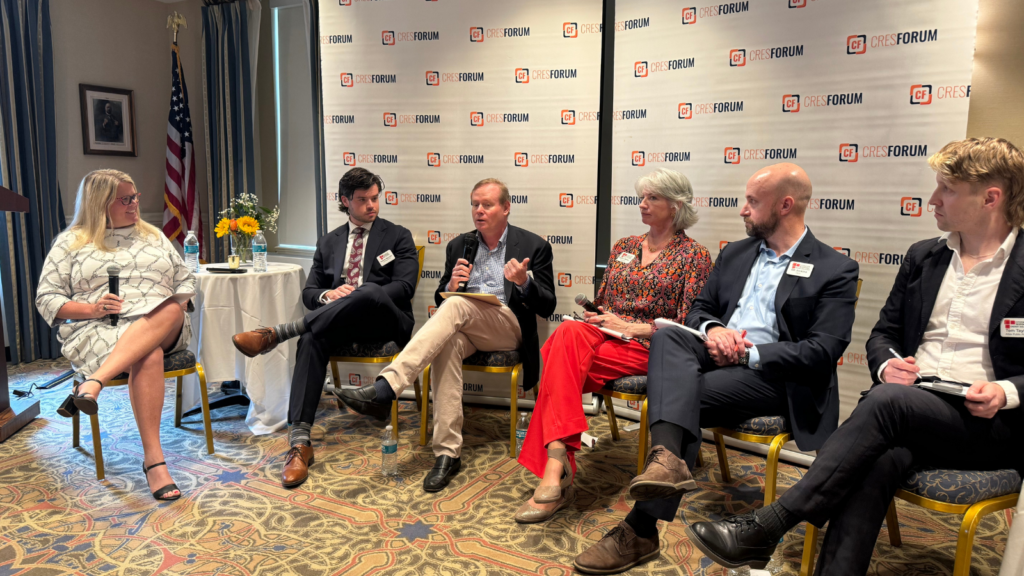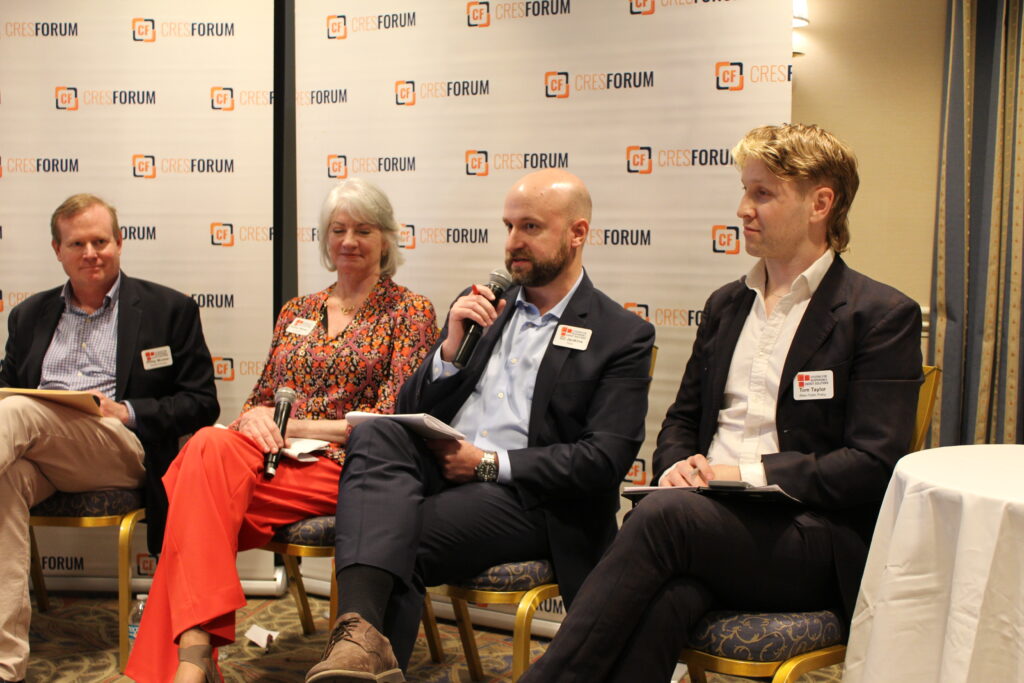CRES Forum recently convened experts from Congress and industry to answer the multi-billion-dollar question in today’s energy space: Are clean energy tax credits working? (Spoiler alert: the answer is yes.)
The panel, moderated by CRES Forum President Heather Reams, featured Tommy Reynolds from Rep. Buddy Carter’s office, Phil Musser from NextEra, Kathy Weiss from Nextracker, Gil Jenkins from HASI and Tom Taylor from Atlas Public Policy. The panelists discussed how clean energy tax credits are working in their respective sectors and why focusing on these federal incentives can help leverage the private sector to incentivize innovation.


Clean energy tax credits and incentives are intended to promote clean energy adoption. Assessing their effectiveness is crucial in understanding whether they drive the desired outcomes, such as increased investment in clean energy projects and reduced overall emissions. Musser and Weiss each shared how the investments from these credits are shaping the future of American energy and public policy and helping their respective organizations grow.
Identifying barriers to clean energy deployment, such as permitting reform, can help policymakers create solutions to address them. As a financier, Jenkins provided a unique perspective on the investment shifts in energy since the credits have gone into effect and how these shifts have affected long-term planning for his clients. Panelists concurred that policymakers must continue to separate the good from the bad to provide certainty and ensure the private sector is incentivized rather than inhibited.
Policymakers must ensure that the incentives are structured to maximize taxpayer benefits while driving sustainable growth in the clean energy sector. It has been said that what gets measured gets managed. Taylor showcased the measurements of the Clean Economy Tracker to highlight which areas of the United States have experienced the most growth from these incentives. By tracking the growth in these communities, clean energy advocates can demonstrate that targeted federal investments spur economic growth, particularly in rural areas across the country.
The political landscape has the potential to shift dramatically in the next year. By investing in clean energy now, Congress can bring clean energy benefits into the United States, ensuring the American economy and environment continue to benefit from these credits. In a conservative state like Georgia, which has greatly benefited from investment spurred by clean energy incentives, communities are realizing the impacts. From direct injections of dollars, such as Hyundai’s $5.54 billion investment for electric vehicle and battery manufacturing, to positive impacts on spin-off industries, including housing and small businesses.
The implementation of clean energy tax credits has been a significant step forward in the pursuit of a cleaner future. However, as with any new policy, it is essential to evaluate its effectiveness periodically in achieving the desired goals. So, are clean energy tax credits working? We think so, and we look forward to continuing to work with Congress to ensure these taxpayer dollars are put to good use!
CRES Forum examined several clean energy tax credits in our Right on Energy policy blog. For more information, read up on an introduction to clean energy tax credits, 45V hydrogen tax credits and 45X advanced manufacturing tax credits.




